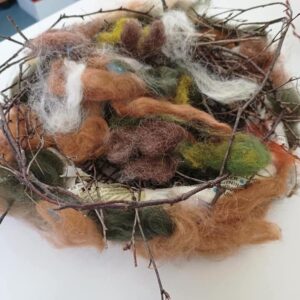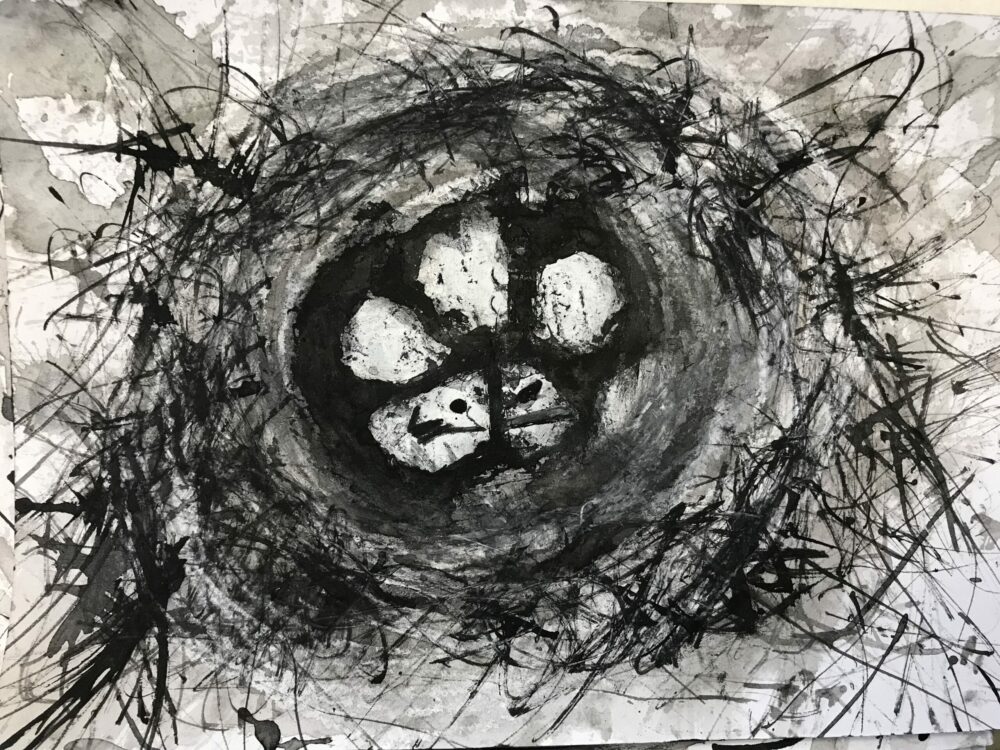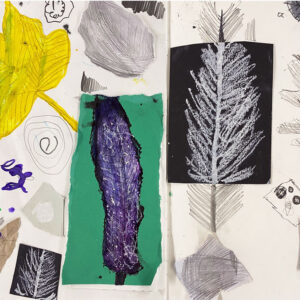Pathway: Sculpture, Structure, Inventiveness & Determination
Pathway for Years 3 & 4
Disciplines:
Drawing, Sketchbooks, Sculpture
Key Concepts:
-
That artists can learn from the world around them. That artists can draw parallels with other beings/events to help us understand things about ourselves.
-
That artists take creative risks. That artists try to say new things by manipulating and representing the materials of the world.
-
That we can feel safe enough to take creative risks in our own work. That we can explore materials and ideas feeling free from criticism.
-
That we can express our personality through the art we make.
-
That we can use materials, tools and the ideas in our head to explore line, shape, form, balance and structure.
-
That making art can be hard, but that doesn’t mean we aren’t doing it right or aren’t good at it. It just means we are doing it.
In this pathway children explore formal drawing and sculpture skills like line, mark making, shape, form, balance and structure, but they also just as importantly explore how it feels to make art. They explore how they can appreciate a sense of challenge, and a feeling of trying things out without fear of failure or “wrong or right”.
Pupils start by seeing how artists sometimes help us learn about ourselves by drawing parallels with other lives. Pupils apply this knowledge by looking at how birds build nests – what can we learn from them about the traits we might show when we make experimental drawings and build sculpture?
Medium:
Various Drawing Materials, Construction Materials
Artists: Marcus Coates
This pathway will take approximately half a term, based upon a weekly art lesson.
If you use this resource in your setting, please tag us on social media: #InspiredBy @accessart (facebook, twitter) @accessart.org.uk (instagram) and share the url. Thank you!





Teaching Notes
Find the MTP for this pathway here.
See the recording of the hour long zoom CPD to introduce teachers to this pathway.
Curriculum Links
Geography: Link with birds and migration via the North and South hemisphere.
Science: Language to support understanding of materials, habitats.
PSHE: Supports Responsibility to the planet, Collaboration, Peer Discussion.
I Can…
-
I have seen how we can learn about ourselves through art.
-
I can feel safe to take creative risks when I work. I can enjoy the feeling of experimenting with materials.
-
I can feel ok when I am being challenged by materials and ideas. I can feel ok when I don’t know exactly what I’m doing.
-
I can use a variety of drawing materials to make experimental drawings based upon observation.
-
I can construct with a variety of materials to make a sculpture.
-
I can see my personality in what I have made.
-
I can talk about the work I have made with my classmates, sharing the things I thought were successful and thinking about things I would like to try again.
-
I can appreciate the work of my classmates and I can share my response to their work, identifying similarities and differences in our approach and outcomes.
-
I can take photographs of my work thinking about presentation, focus and lighting.
Time
This pathway takes 6 weeks, with an hour per week. Shorten or lengthen the suggested pathway according to time and experience. Follow the stages in green for a shorter pathway or less complex journey.
Materials
A3 cartridge paper, soft B and hard H pencils, ink, graphite sticks, water soluble graphite, wax crayons, water colour.
Construction Materials (see list here )
Pathway: Sculpture, Structure, Inventiveness & Determination
A PDF of this pathway can be found here.
See the Pathway Used in Schools...





























Frances Dimmer
November 3, 2022 @ 7:47 pm
I always leave Access Art zoom meetings with a bunch of key words in my head but this pathway explanation was exceptional. Here are some of the words which really resonated.
Distinctiveness: Art compared to other disciplines, didactic teaching compared to shared modelling and learning/exploration.
Perserverence: overcoming fear and frustration
Determination: meeting problems head on but seeking solutions positively
Inventiveness: exploring ideas from practising artists, the scope of mark makers. Inventing new ones and describing qualities.
Life skills, artistic endeavour, learning to apply t˙em.
Personality, character, choice and its influence during making
Practical issues: appropriate tools, relevant but manageable resources
Critical links.
Another exellent resource and reference for all teachers of any age.
Rachel
November 7, 2022 @ 11:19 am
Thanks Frances, we’re really glad you got so much from the session. We’ll be doing some more pathway sessions in the spring term!